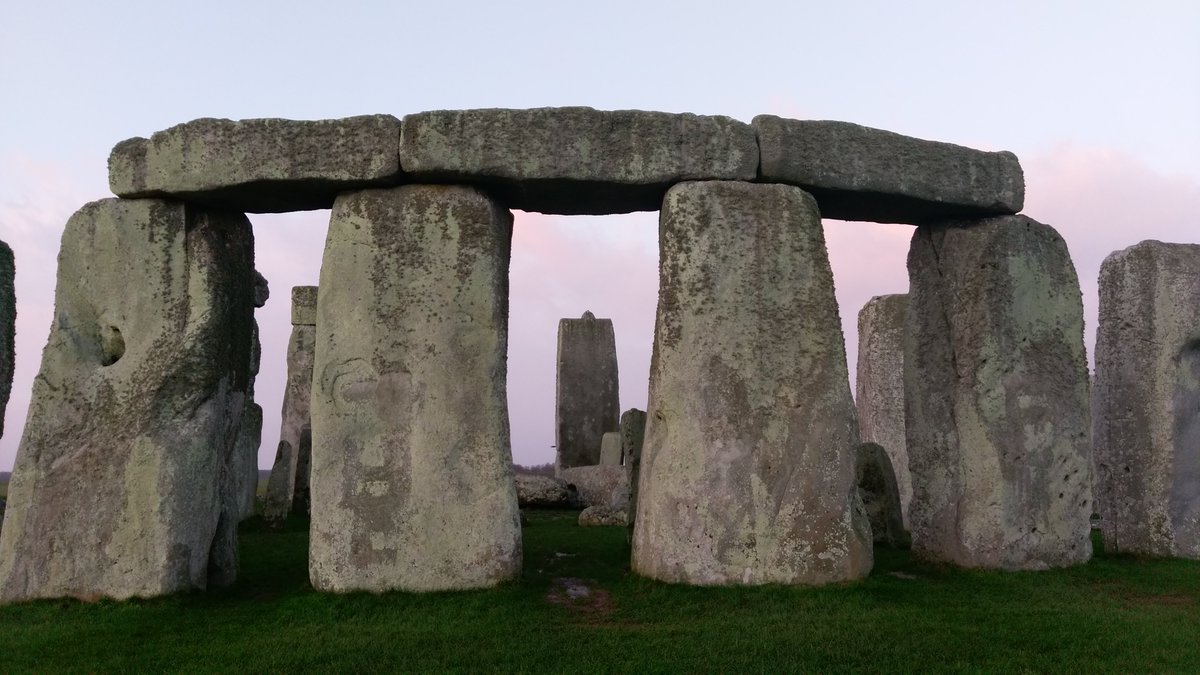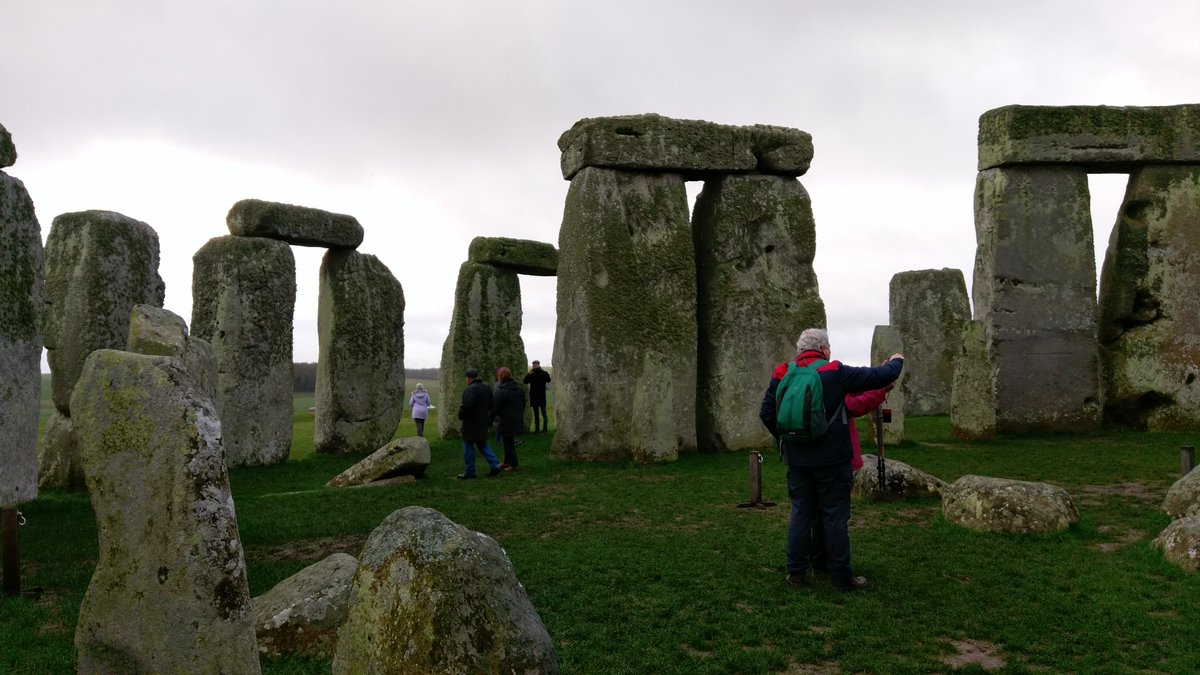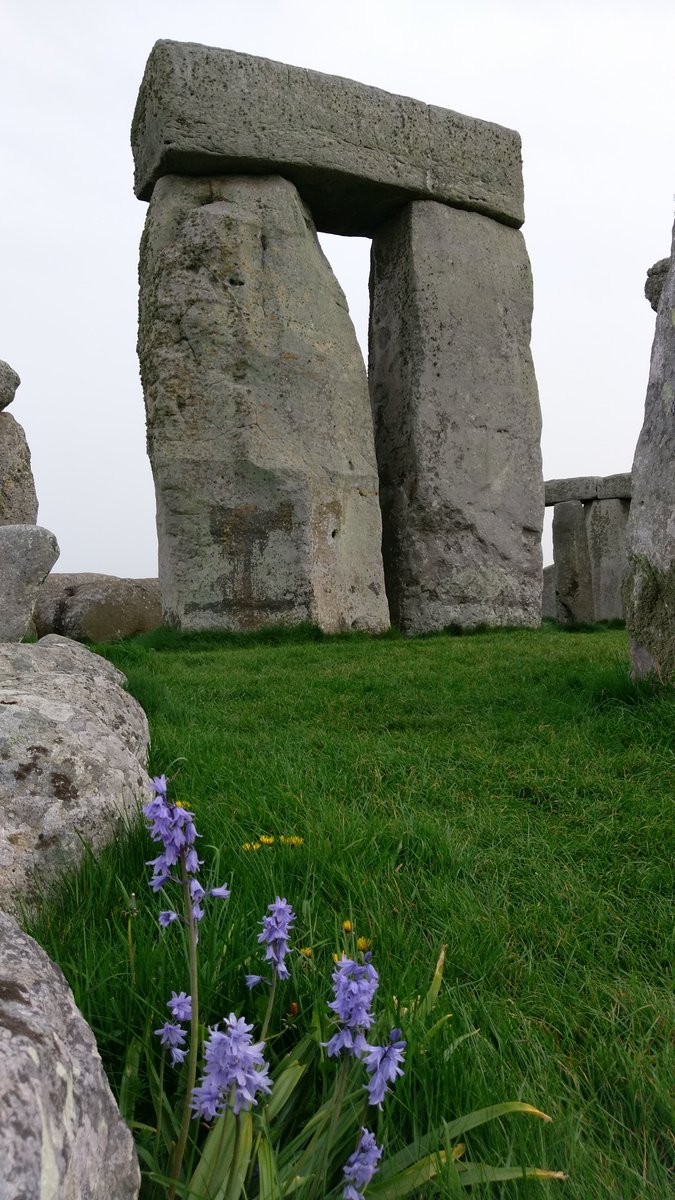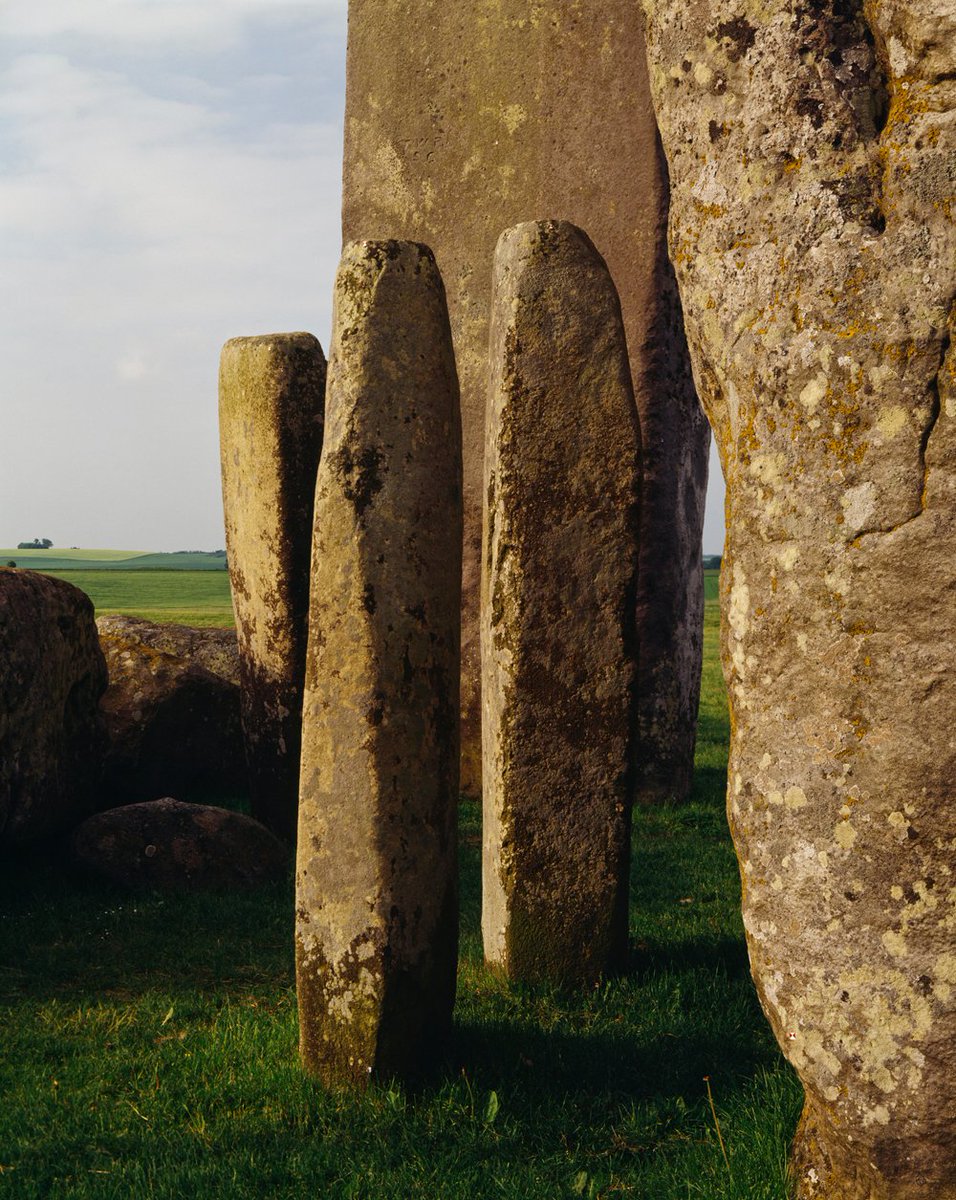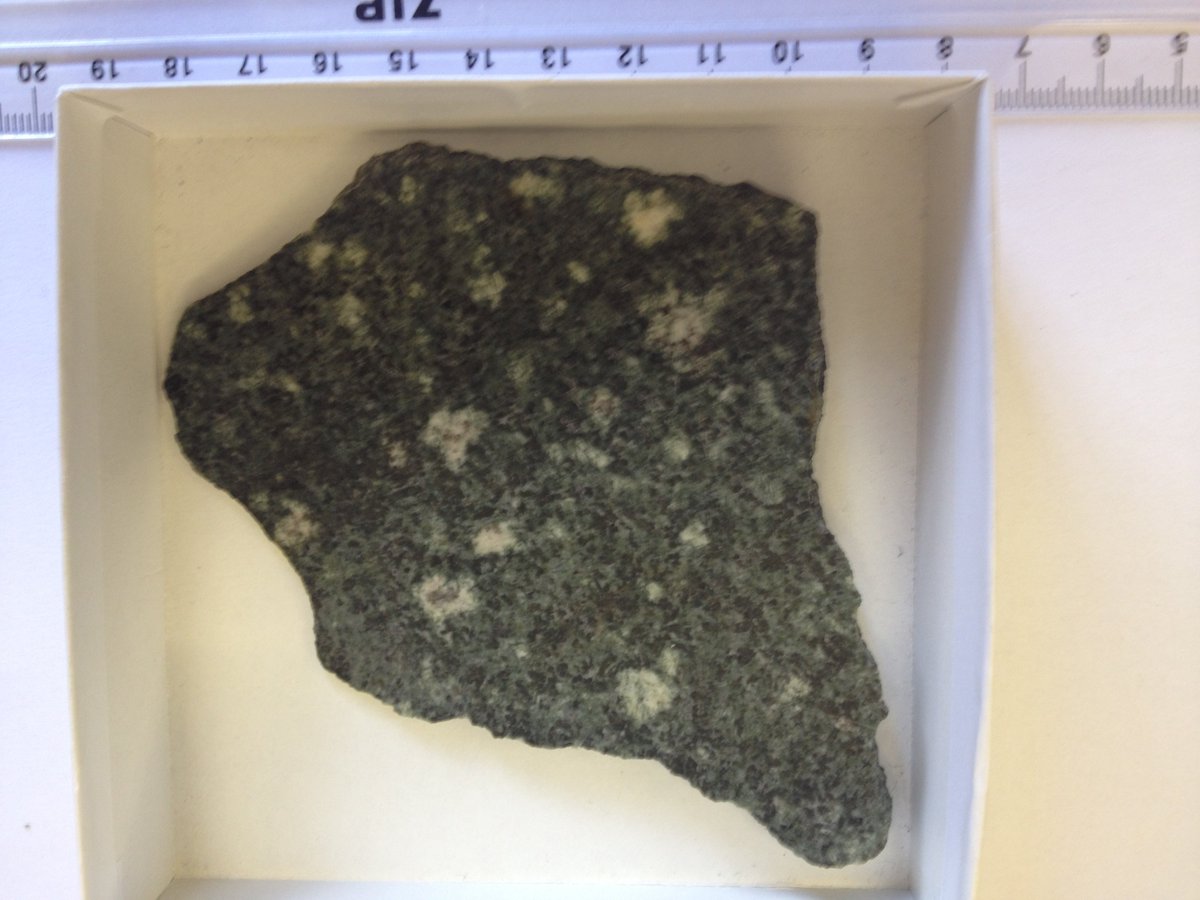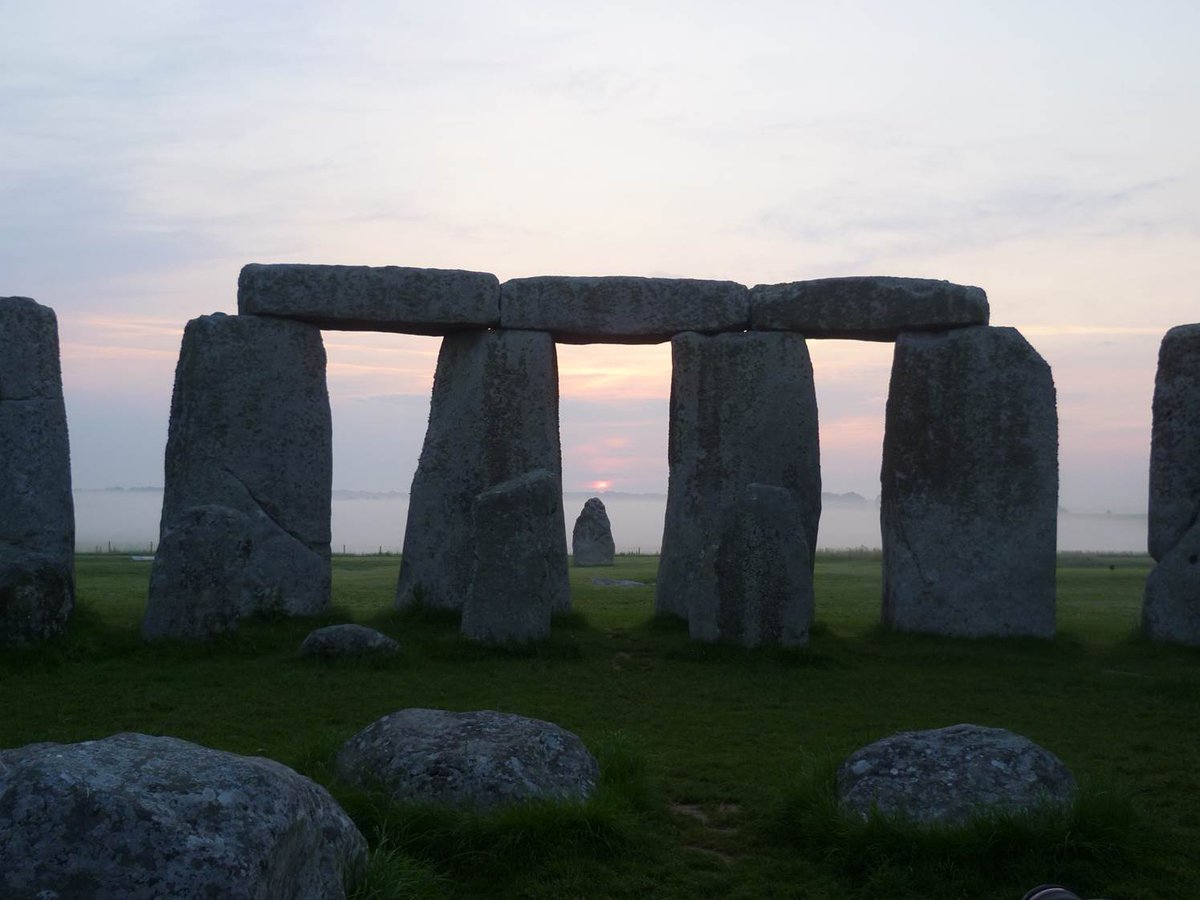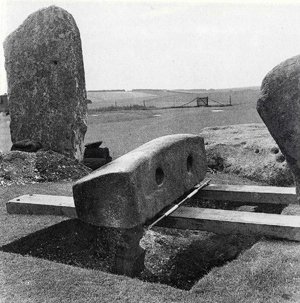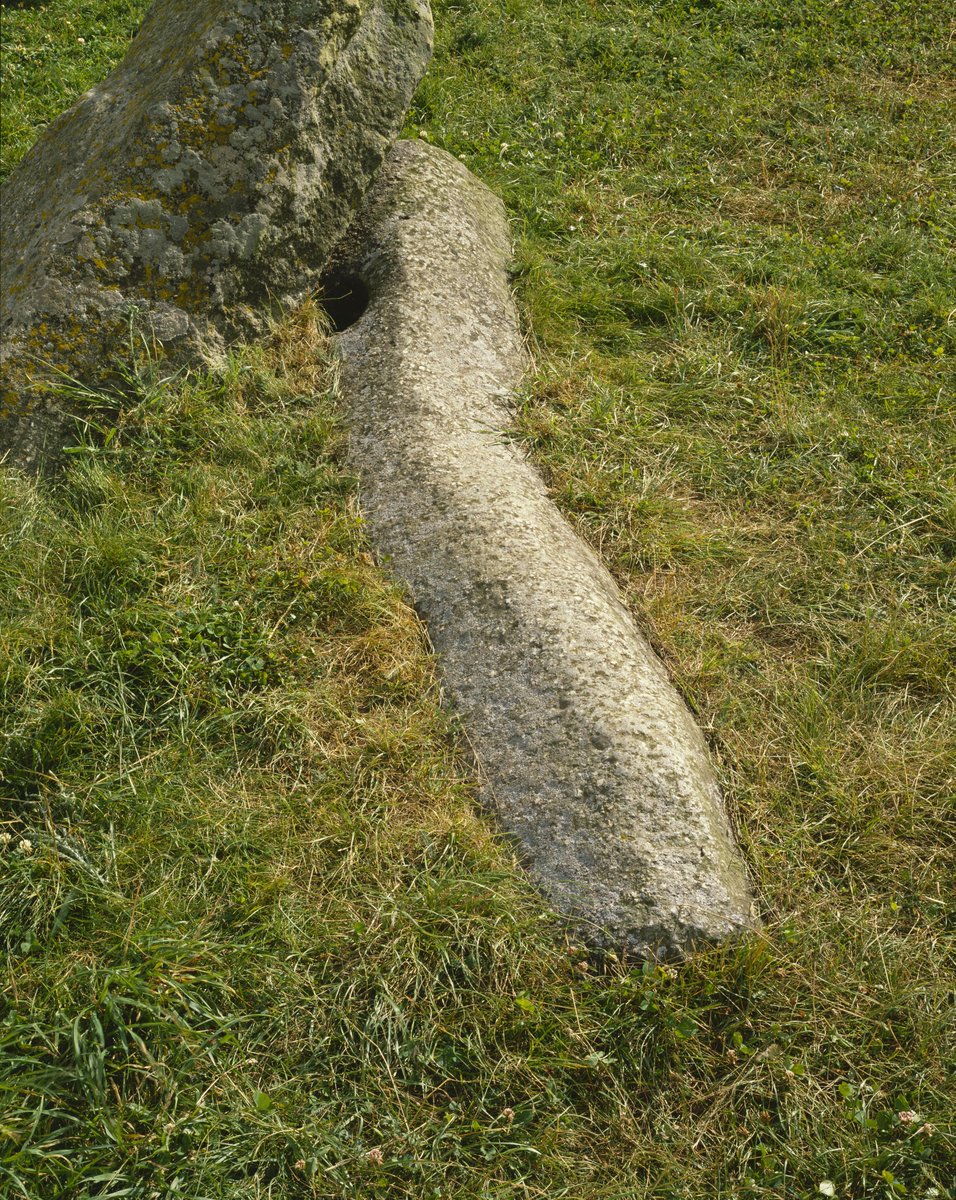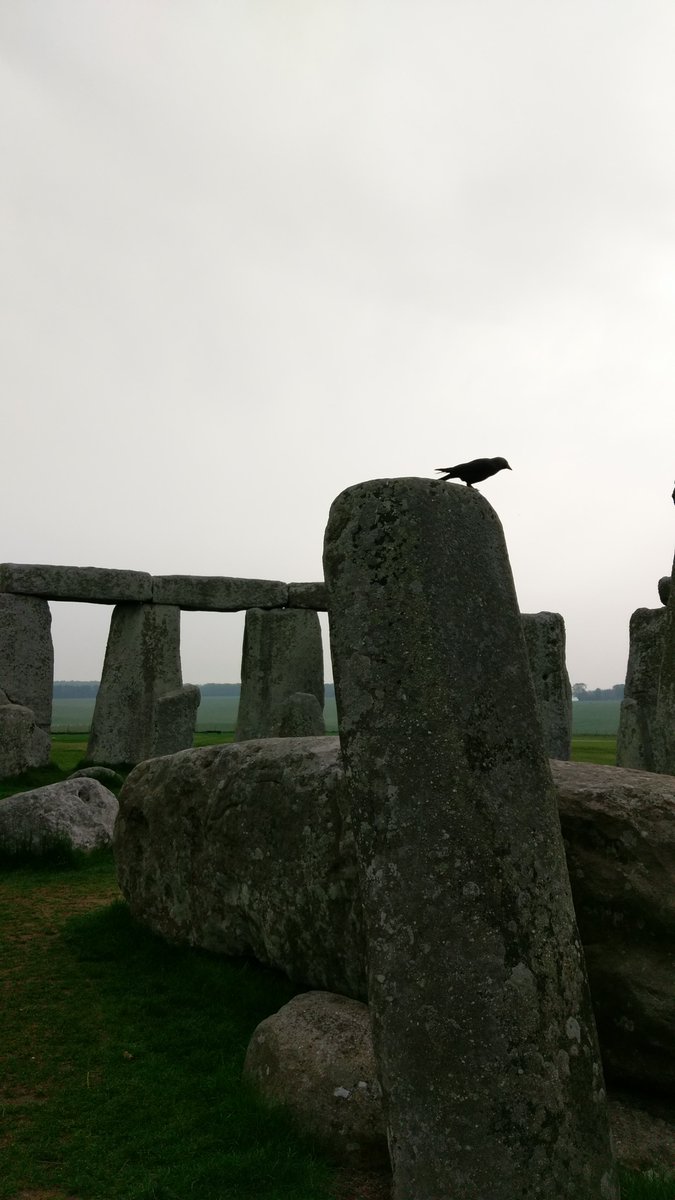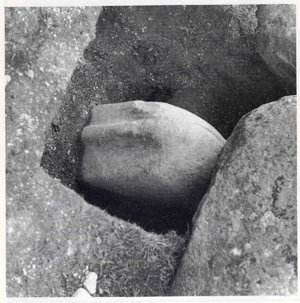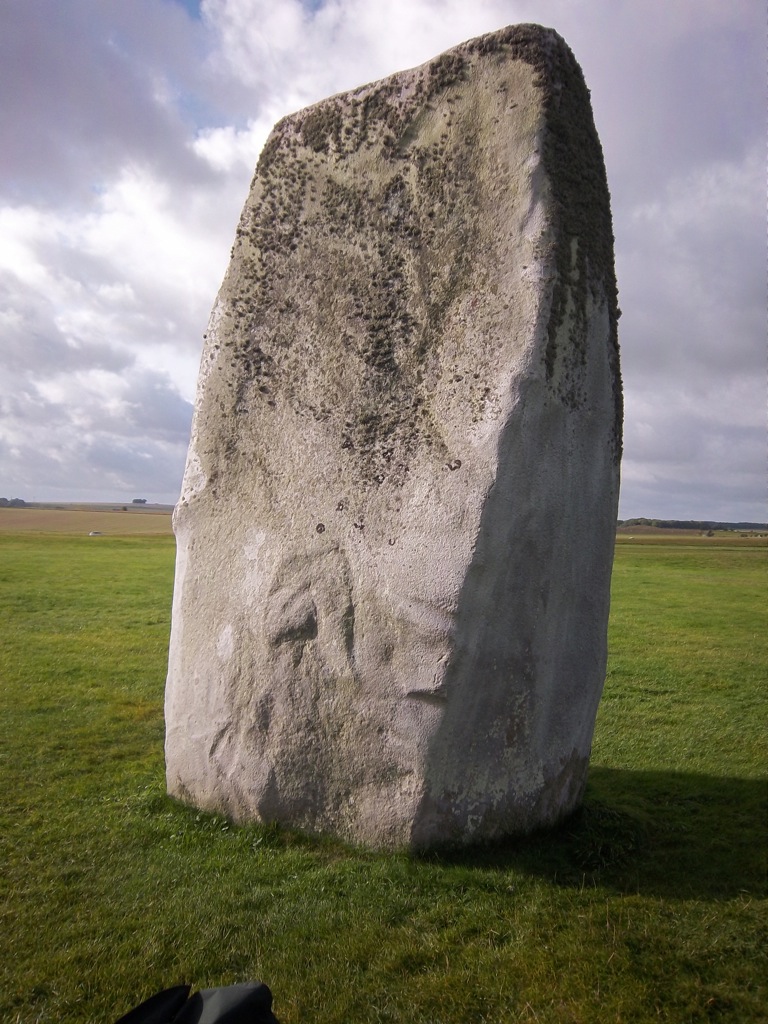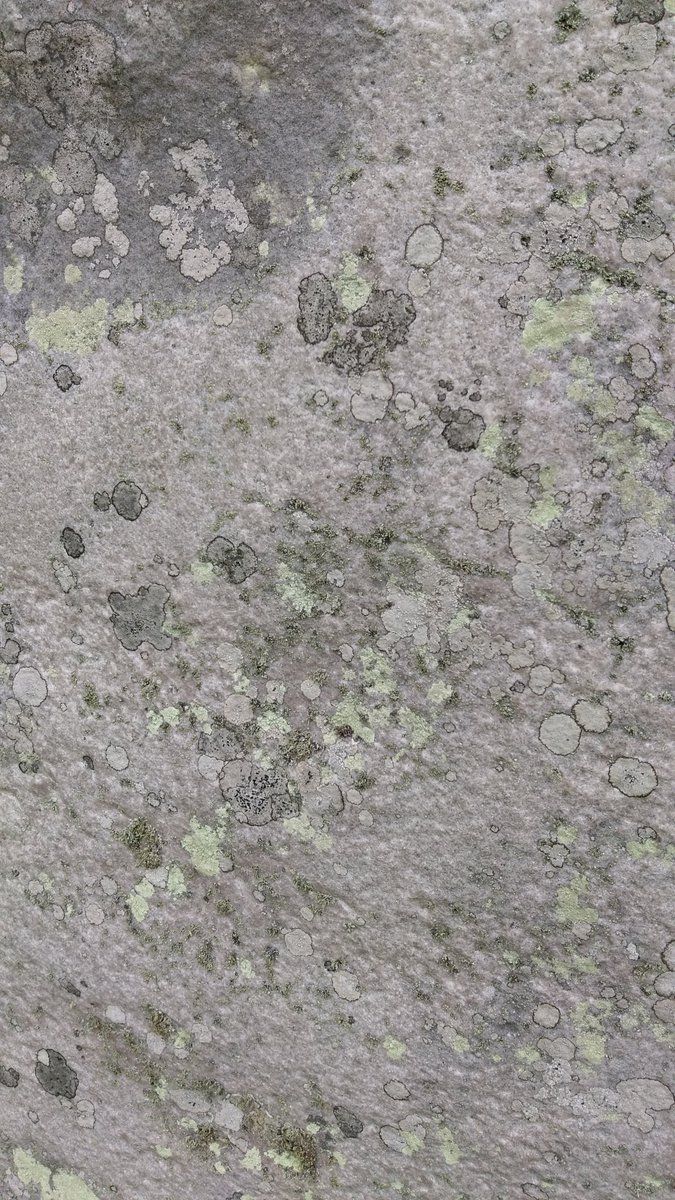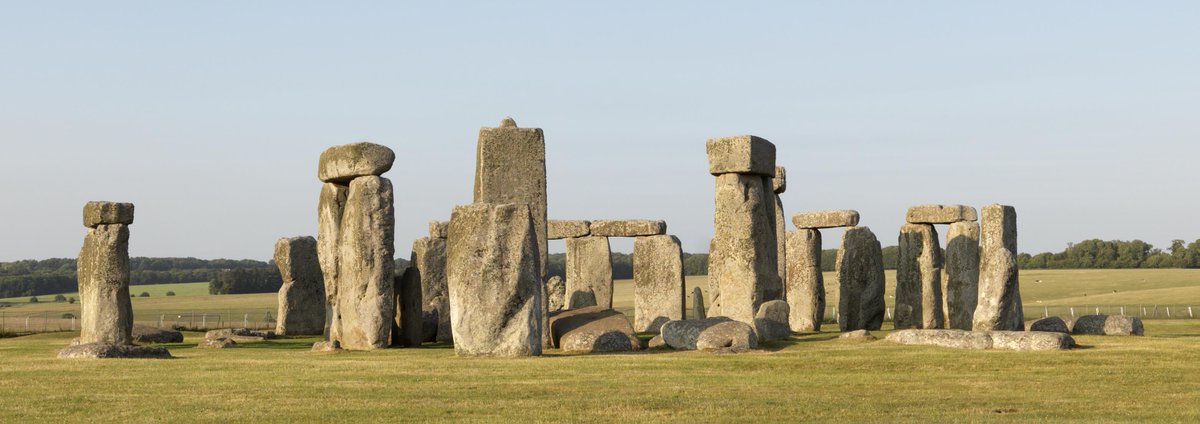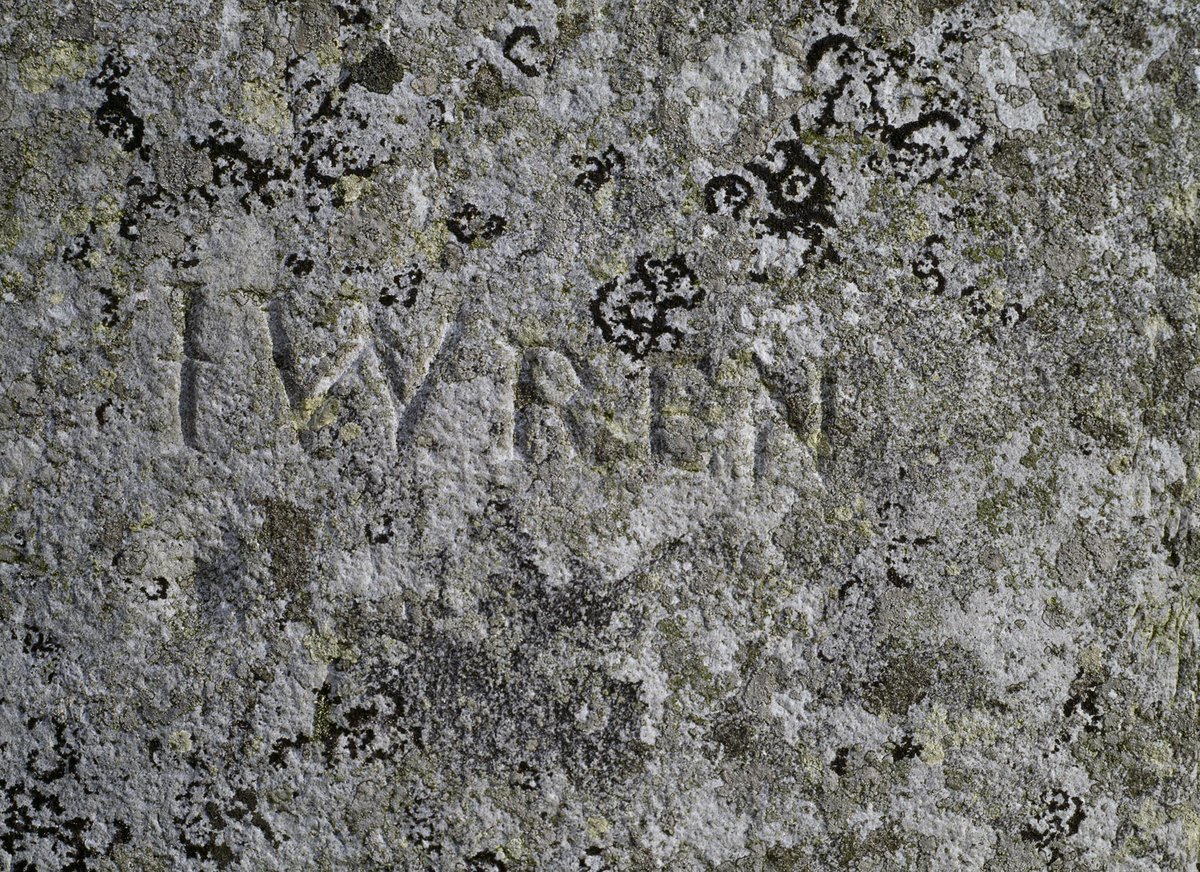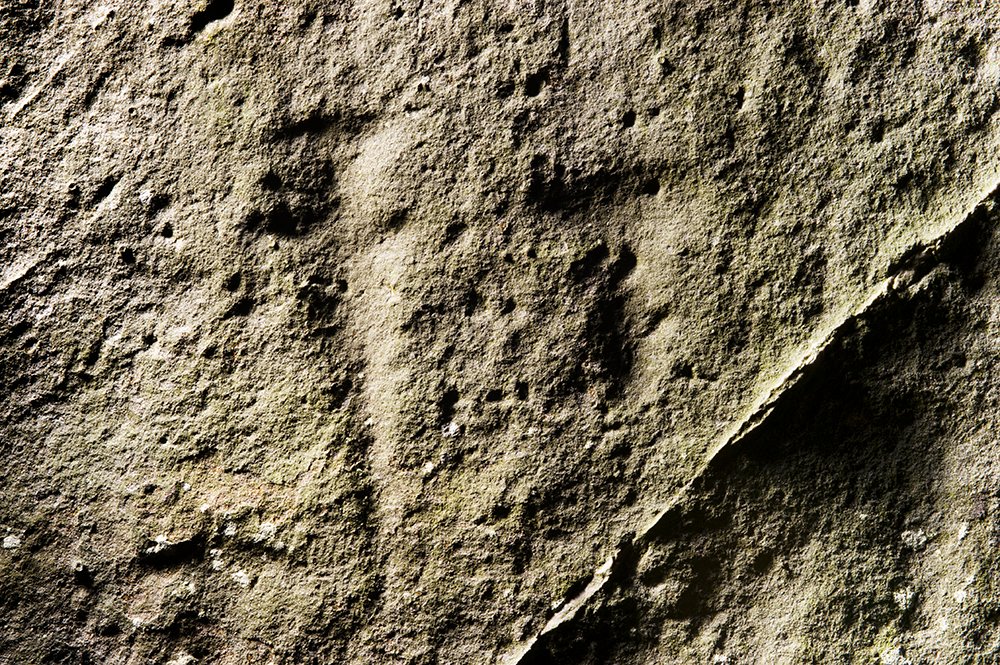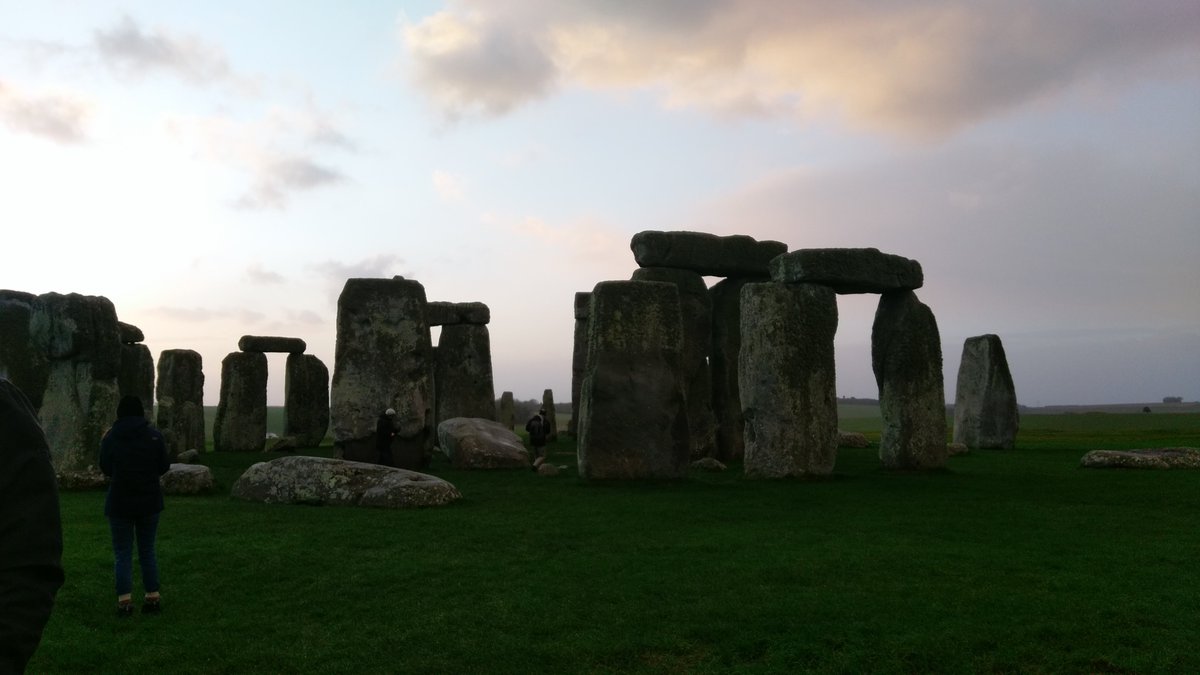Come with me on a guided tour of the central stone circle at Stonehenge! This is an abridged version of the tour that I usually give to members and special guests before the site opens to visitors. So pretend it is a chilly February morning... #MuseumsUnlocked
First up, let’s orientate ourselves. Stonehenge is built of four concentric rings of stone. On the outside is the sarsen circle – 30 uprights and 30 horizontal lintels, built in about 2500 BC. The sarsens were probably from the Marlborough Downs, about 20 miles to the north.
Moving inwards is the outer bluestone circle of a variety of shapes and sizes, seen here on the left. Bluestones are a variety of geologies (volcanic tuffs, rhyolites, dolerites…) and these are the ones that were brought from the Preseli Hills in south-west Wales.
Next we have the sarsen trilithon horseshoe. Trilithon is a word taken from Greek meaning ‘three stones’: two uprights and a horizontal lintel. These trilithons include some of the largest sarsens on the site, with several weighing over 30 tons.
Within this is a horseshoe of bluestones (once an oval). These ones are more pillar-like and slender than those in the outer bluestone circle. Most of them are spotted dolerite, a distinctive dark blue stone with white quartz inclusions, looking a little like the night sky.
Within the top of the bluestone horseshoe is the Altar Stone. It’s made of Senni Beds sandstone from mid-south Wales. Today it lies under half of the fallen tallest trilithon and its lintel. Whether this stone stood upright or has always been horizontal is not known.
And what& #39;s most important about Stonehenge? It is aligned with the movements of the sun. The sun rises just to the left of the outlying Heel Stone on the longest day, and would have set between the two uprights of the tallest trilithon on the shortest day.
Ok, you’ve got the basic layout. Now we’ll look at some details. Two of the fallen bluestones in the outer circle have two holes, one them still visible. They are lintels, a clue that the bluestones have not always stood in the same positions.
Some of the pillars in the centre have tenons on top that would have fitted into these lintels. Others have long grooves or tongues down their sides, like this leaning one. Excavations have shown that they originally stood in what is called the ‘double bluestone circle’.
Sarsen Stone 16 is a really good one to look at to see the way that the stones were worked and shaped. The surface has this orange-peel effect – these are the individual bashes of hammerstones when the people were shaping them.
Round the ‘back’ of Stonehenge lots of the stones of the outer sarsen circle are missing. We know from the bits left lying around and parchmarks of the stone holes that the stone circle was likely complete, although some archaeologists disagree!
Stonehenge has a lot of graffiti, dating from the 17th to 20th centuries. The only one where we know the person is this one. Christopher Wren, the famous architect of St Paul’s Cathedral! He gouges his name into Stonehenge twice, the cheek.
It also has some much older carvings. These are the shapes of a dagger and an axe. We know now that over 100 small axes and 2 or 3 daggers were carved onto the stones, probably in about 1800 or 1700 BC. By this date, the original meaning of Stonehenge may have been forgotten.
There& #39;s a stone in the middle here that has a concrete base. This was added in the late 1950s, as part of a major programme of restoration and conservation when many of the stones were set in concrete. This stone had a hollow here that people used to sit in out of the rain!
That& #39;s the end of our mini Stonehenge tour. Please feel free to ask questions! Thanks to @profdanhicks and his #museumsunlocked for the initiative. Our @EnglishHeritage website has loads more info https://www.english-heritage.org.uk/visit/places/stonehenge/history-and-stories/">https://www.english-heritage.org.uk/visit/pla...

 Read on Twitter
Read on Twitter
